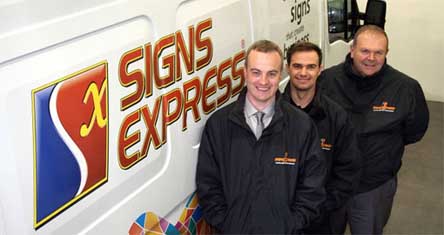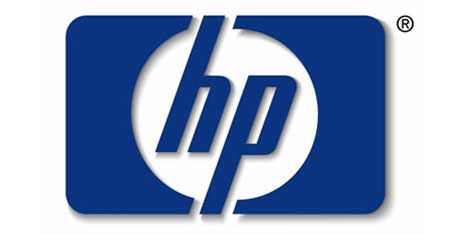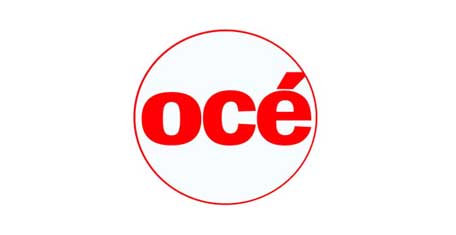
In his latest article, Peter French, a regular contributor to Large Format Review and our' man on the ground', questions whether we can determine the future of technology...
"Some years ago, I remember reading about a demonstration of the first telephone in the USA. A US Senator, presiding over the event, stated, “This is a great achievement... I can see a time in the future when every city will have one.” Brilliant! Not just slightly out in his foresight, but out by a massive degree.
Similarly, I was at a technology event in Washington about 15 years ago listening to a presenter speaking about the mobile revolution. He declared that the next battleground after the desktop would be the battle for “belt space”. At this point he peeled back his jacket to reveal a mobile phone, a personal organiser and what was then a piece of emerging technology in the form of mobile computing. Again, a complete miscalculation on the pace of technological change that would mean in a few years all of these applications would be combined into a single handheld device - namely the mobile phone.
We seem to find it difficult to see the future changes in technology because we base our perception of the future on the ability of technology in use today. I met Steve Jobs some years ago before his great advances into the ‘i-Something’ devices. A very perceptive gentleman. The one thing I remember about him was that he never took his eyes off you when you spoke to him. As we conversed, he lifted a glass of water to his mouth and as I looked at him, still talking, I noticed that his eyes were still looking at me through the bottom of the glass.
Anyway, why, thirty years ago, was he not concentrating on the integration of applications to micro-devices rather than developing desktop technologies? Again, our perception of the changes in technology is based on what we see available today. We lack imagination beyond our own experiences and view of the world. 9/11 is another example where, prior to the event, we were unable to comprehend such a dreadful act because it had no precedent nor could it be understood by any normal rational thinker.
We are great inventors but we need vision which can be manipulated into sales and revenue projections to enable the funding of R&D. When I started in computing in the early 70s, the industry was lead by engineers who would develop machines for the greater good of commerce and industry with little regard to making hefty profits. By the mid-late 80s when computers started appearing in homes and on desks - the industry had completely turned on its head and was now driven by salesmen who steered the industry inventors towards the greater revenue streams. This meant that rather than working to develop a piece of life-saving equipment for hospitals, it was more profitable to develop something for the mass market that would sell in greater numbers and yield greater profit. A sad indictment of humanity perhaps, but it’s hard to blame these businesses. It is in our character to seek the greatest rewards for our efforts.
Digital signage is a relatively new area of development, but not a completely new technology as we have been bombarded with it in our homes for years in the form of annoying adverts in the middle of Midsummer Murders or whatever programme floats your boat. Digital signage is everywhere and sometimes we fail to even recognise it as such. We are hit by it everywhere on the internet in the form of banner adverts or adverts embedded within emails. Subliminal messages for deals or free offers.
Look at most of the major sports grounds where rolling ads surround the pitch. Do we actually read them in our conscious mind or are they being stored up in our unconscious mind, ready to guide us in our choice of beer in the pub. In Tesco’s, there are screens in the aisles that highlight the latest offers and discounts as you push your trolley along. How long before your mobile phone pings a message to you that it’s ‘two-for-one’ this week, as you walk past digestive biscuits? How long before your mobile phone identifies you as a likely purchaser of a product to a “hot spot” in the store aisle, and a “personal” too-good-to-miss offer is immediately pinged back to your phone?
One of the major hotels has built in a transponder built into its loyalty cards - thereby identifying its customers by name to desk clerks before they even reach the front desk. This enables the clerk to initiate the conversation with “Hello Mr so-and-so and how are you today?” as if by magic. Very clever and a great marketing tool. How long before your mobile phone identifies you in this way – or can it already do it?
So, where am I going with all this? I don’t think any of us can easily see where the printing industry is going. If we invest in static digital signage expertise, it could all go mobile. If we go mobile, it could go static. The one thing that is certain, that the written word or the picture that paints a thousand words, will prevail.
We can surely state that static printed signage and large format printing will continue for some years yet. Look at the most technological advanced countries like Japan and the US. Their cities are awash with print although also splattered with a good amount of digital. In Times Square I calculated one advert to be 7 metres high and a whole city block long. Enough work in one advert to keep my company busy all month long. But digital/electronic has always been with us. Have a look at old pictures of Piccadilly Circus; it’s always had electronic ads. Not as clever as they are now, I grant you, but based on the same concept.
We don’t, with any certainty, really know where this industry is going and we would be foolish to try and pre-judge it. In print, if an innovator identifies a new printing method, we may all be looking at replacing our large format machines perhaps with something that electronically changes the colour of the molecules in a sheet of Foamex rather than printing on the surface of it. We may be able to RIP a design on a mobile phone on our way to work and Bluetooth it to any printer by just pointing the device at the machine.
We may find an increase in digital roll-out, but I still feel that printing will have a place. While someone is trapped in a traffic jam, I would rather like them to have no alternative than to be staring at a huge advert for my products. Selfish I know, because they should be looking at the beautiful scenery or wildlife and nature’s beauty, but that, unfortunately, won’t earn me shilling. I can’t control whether a person owns a mobile phone or has it switched on, but one thing is certain, if I make a printed advert big enough – they ain’t gonna miss it!"
About Peter French: Peter has been working in the sign industry for 9 years having spent a lifetime in IT. Specialising in kick-starting businesses, Peter worked in many diverse business sectors. For most of the time at Signtec he has been at the forefront of large format printing with both solvent and UV technologies.








